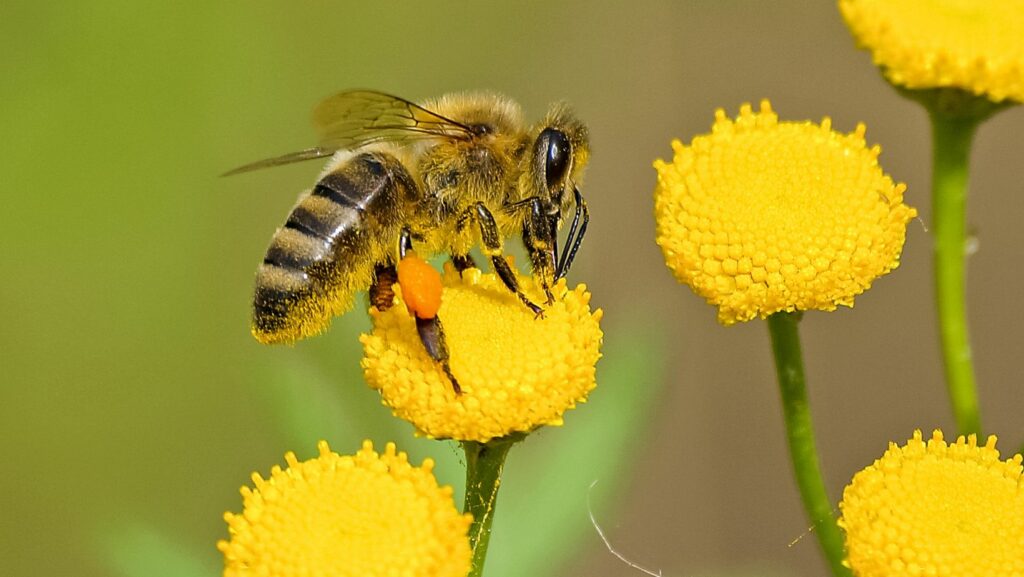Bees are amazing. Their quiet and vital role in the natural world is, in one word, irreplaceable. These tireless pollinators are the reason why countless plant species thrive, sustaining our food systems. Yet today, they face unprecedented threats that have brought many bee populations to the edge of collapse.
While conservation efforts focus on agriculture and policy, there seems to be a surprising ally: fashion. Fashion embracing sustainability and biodiversity can help protect the ecosystems bees depend on. The connection might seem odd here, but undoubtedly, it is real and growing ever so stronger.
Fashion’s Hidden Impact On Bees
The global fashion industry is huge. The environmental footprint it leaves is also substantial. The cultivation of conventional cotton, for example, relies highly on pesticides. Deforestation for leather tanning and synthetic textile production and the use of harmful dyes further impact the pollinator habitats. Every stage of the supply chain in the fashion industry contributes to conditions threatening bees. However, this also means fashion holds immense potential to reverse the damage by embracing sustainable materials and ethical practices. The industry can become part of the greater solution.
A Switch To Sustainability
The first step in pollinator-friendly fashion is choosing materials that do not harm the bees. Organically grown cotton eliminates the use of neonicotinoids and other pesticides responsible for bee die-offs. Hemp and linen are also great alternatives and are naturally pest-resistant. Regenerated fibers like TENCEL ™, produced from sustainably harvested wood pulp, reduce the overall pressure on farmlands and forests that support native bee species.
Even more promising is the rise of regenerative agriculture in fashion’s supply chain. In contrast to traditional organic farming, regenerative practices aim to restore ecosystems. Some regenerative cotton farms in the US are known to add wildflower margins and hedgerows to attract native pollinators. Fashion begins not with exploitation but with stewardship.
Local Production And Community-Based Models
Since corporate global fast fashion systems are known to harm pollinator habitats, local, small-scale fashion production offers a compelling alternative. When designers can source materials regionally and work with local artisans, they minimize the impact on the environment. Some innovative brands take this a notch higher by working directly with local beekeepers and farmers to help maintain pollinator-friendly landscapes. For example, using natural dyes from plants grown alongside hives or wool from sheep raised on meadows planted with bee-friendly flowers. The collaborations create supply chains rooted in reciprocity with nature rather than exploitation.
How Can Fashion Help The Bees?
Raise awareness with bee-inspired designs
Throughout history, bees have inspired art, myths, and designs. Their hexagonal patterns, golden hues, and symbolic associations with community and resilience have long been a strong appeal for designers. Today, many are using that inspiration to highlight the urgency of pollinator conservation.

Designers are now incorporating bee motifs into ethically produced clothing and accessories. This is not just for the aesthetic appeal but to draw attention to the pollinators’ plight. One growing trend is bee jewelry, such as necklaces, rings, and earrings that feature bee shapes or honeycomb patterns. These pieces often go beyond decoration; they now serve as a statement piece that connects the wearer with the cause and spreads awareness with every glance.
Fashion As A Communication Tool
Clothing tells a story, and in this digital age, it can reach a wide audience pretty fast. Fashion does have an innate ability to carry messages- visually, emotionally, and socially. A super powerful tool for bee conservation advocacy. Campaigns, pop-ups, and fashion shows themed around bees can drive public interest and media attention. Social media stars wearing bee-themed designs or sharing sustainable wardrobe choices can spark curiosity and conservation.
Many brands are now using their platforms to educate through storytelling- whether it is through tags that explain the environmental impact of a garment or QR codes that link to conservation projects.
Major brands, too, are doing their part. Brands like Beezzit, a platform dedicated to combining fashion, awareness, and bee conservation, are partnering with designers and bringing the very best of sustainable fashion on their platform while also channeling parts of the profit back to bee conservation initiatives.
Turning Profit Into Protection
Then there is the direct impact of fashion. It can provide direct funding for bee conservation. Limited edition collections, collaborative capsules, and cause-driven drops offer brands a chance to contribute meaningfully. When structured transparently, these initiatives can generate massive revenue for pollinator programs while encouraging consumer participation.
Conscious Consumption
For bees, this shift couldn’t have come at a better time. The movement toward pollinator-conscious fashion is a true reflection of the broader shift in consumer values. People are increasingly questioning where their clothes are coming from, how they are made, and what impact they have on the world. Every person who chooses to support the cause contributes to the larger mission. These choices will reduce the demand for toxic farming and promote systems that work with nature rather than against it.
A Future Styled By Nature
Fashion alone can’t save the bees. But when paired with education, habitat restoration, and policy reforms, it can be a very powerful ally. Bees have shaped our landscapes, food systems, and cultures for millennia. Their loss would be devastating not only to the environment but to human life itself.

As consumers, designers, and brands move towards the collective vision, the fashion industry has a chance to change its legacy from one of waste to one of restoration. And if it succeeds, the bees just might still have a fighting chance. Wear your bee-themed fashion with pride.

